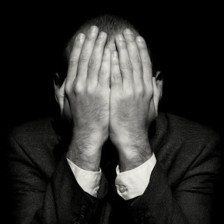Here are several cognitive-behavioral strategies that are described by the San Francisco Bay Area Center for Cognitive Therapy to improve insight into your BDD
Self-Monitoring
I ask the individual to monitor how his BDD symptoms vary over time. Every hour he rates (0-10) how strongly he believes, for example, that his nose is too large. He also notes what was happening at the time and how he was feeling. We then plot on graph paper the strength of the person’s belief, where 10 is “my nose is too large” and 0 is “my nose is fine.” Sometimes seeing his belief fluctuate by the hour helps the client recognize that he can’t always trust his view of himself.
Cognitive Restructuring
Individuals with BDD have distorted beliefs about their appearance, such as “I have to look perfect,’ or, “If I don’t look good, I’ll be rejected and alone.” Teaching individuals to identify and restructure these distorted beliefs can sometimes help the person gain enough insight to try other bognitive-behaviroal strategies.
Cognitive Distancing
Individuals with BDD have difficulty accepting that they have BDD because that would mean their appearance is okay. One young man who told me session after session that he did not have BDD. What he had was a left ear that was lower than the right ear. He insisted that only plastic surgery would correct the problem.
I commiserated with him and said that plastic surgery was certainly a logical solution to the problem of a true flaw in his appearance but that it was not a solution to BDD. The problem as I saw it was that every time his BDD flared up he bought into the belief that his appearance was flawed. I then taught him a cognitive distancing strategy described by Jeffrey Schwartz in his book titled Brain Lock: Free Yourself from Obsessive-Compulsive Behavior.
Schwartz describes the 4 Rs. I’ll cover the first three here. The first R is “relabel.” The client was taught to relabel any concern, thought, or belief about his appearance as a feature of the BDD, not proof of a physical flaw. He was then to use the second R (reattribute) to attribute every aspect of his experience (his thoughts, feelings, urges, and behaviors) to the BDD. He was then instructed to refocus (3rd R) or distract himself from the BDD thoughts.
An “as if” Attitude
At times I have asked a client to act “as if” he looks okay even if he doesn’t believe it. An “as if” attitude is particularly helpful when trying to get a client to try an exposure exercise that, because of his poor insight, he believes is useless.
I’ve asked clients to use the “as if” attitude to stay at a party when they have a strong urge to leave, to go to social situations when they are inclined to remain home alone, or to stop looking in a mirror when they feel that they must continue. One of my clients used this strategy to go to a party that he wanted to avoid by acting “as if” he was okay and “as if” going to the party would help his BDD and his depression. Once at the party, he was able to use his CB strategies to manage his BDD and that as the evening progressed, he was much less worried about his appearance.




